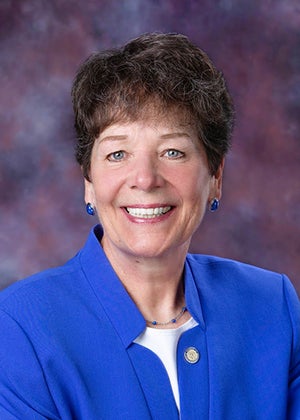Capitol Comments: Comparing 2 education plans: which would you choose?
Published 8:45 pm Friday, April 21, 2023
|
Getting your Trinity Audio player ready...
|
Capitol Comments by Peggy Bennett
This week, Minnesota House Democrats — the majority party — brought forward their plan that will fund Minnesota’s schools for the next two years. House Republicans also have a plan that the House majority almost certainly will not bring forward to debate, so I thought I’d review the two proposals here.
Both parties’ proposals increase overall educational spending by $2.2 billion, which is historic. Both sides also agree in some other funding areas, including special education cross subsidy, transportation sparsity and the SPED teacher pipeline. But, as you’ll see, the major differences between the two plans center on how much more would be allocated locally, and the number of mandates that local school districts would be forced to follow.
For example, House Republicans want per pupil funding to increase by 5% and 5% over the next two years, while House Democrats propose a 4% and 2% increase. When it comes to safe school and mental health funding, the GOP proposes $78 million in direct flexible dollars to districts, while the DFL allocates $75 million in conditional or restricted grants. House Republicans would also provide $250 million for districts to transition to proven Science of Reading based literacy, while the Democrats prefer $73 million for what they call “evidenced based’ literacy.
Local control is also a major portion of the House Republican plan, as we believe things like curriculum, school discipline, collective bargaining and class sizes should be decisions made at the district level, while Democrats want these items either mandated or restricted.
Also worth noting: the Democrats want to spend millions adding 47 new bureaucrats to the Minnesota Department of Education (House Republicans want zero). They would also send $38.8 million to nonprofits instead of local school districts, which we also oppose.
But the biggest area of difference centers on mandates. These are basically marching orders sent down to the local school districts from state government. They are not suggestions — they are must-do’s — and many of them come with a significant price tag.
In all, House Democrats want to implement about 65 new mandates on Minnesota’s schools, while Republicans would suggest TWO.
Our schools have not asked for these mandates — funded or unfunded. Mandates create more work for schools. Mandates cost money. Mandates put extra burdens on teachers who already struggle greatly to find the time during the school day to adequately teach basic subjects like reading, math and writing.
I have heard from numerous school superintendents, principals and teachers, as have my colleagues, about these mandates. To a person, they are beyond concerned that the Democrat mandates will eat up most, if not all, of this historic new revenue. These dollars should be directly allocated to the local level right to the classrooms to help students instead of placed into special pots of money restricting the way districts can use it.
Just as important, at what point do you trust the people you have elected at the local level (school boards) and the people they have chosen to hire (superintendent, principals, teachers) to do the jobs they are supposed to do? State government does not have all the answers. Do we really want a state school board? That’s the direction we are heading with these mandates.
Where would that leave parent input?
What might work for a school in the metro area most likely will not work for a school in Greater Minnesota. Discipline issues that are being mandated in an inner-city school should not be mandated in a Freeborn County school. A one-size mandate rarely fits all, and in the case of K-12 Education, it should rarely be attempted.
No one likes to be told how to do their jobs by people who live hundreds of miles away and have never set foot in their building. Yet that is exactly what will happen if the House Democrat proposal becomes law.
The House Republican plan puts the bulk of the money on the formula and leaves out almost all of the mandates included in the House DFL budget proposal. We developed this proposal to allow local districts the funding and flexibility to innovate and meet their individual needs. Unfortunately, House Democrat leadership has chosen to go a different direction.
I would love to hear your thoughts on which plan you think is the direction we should go. Please let me know!
Peggy Bennett, R-Albert Lea, is the District 23A representative.


